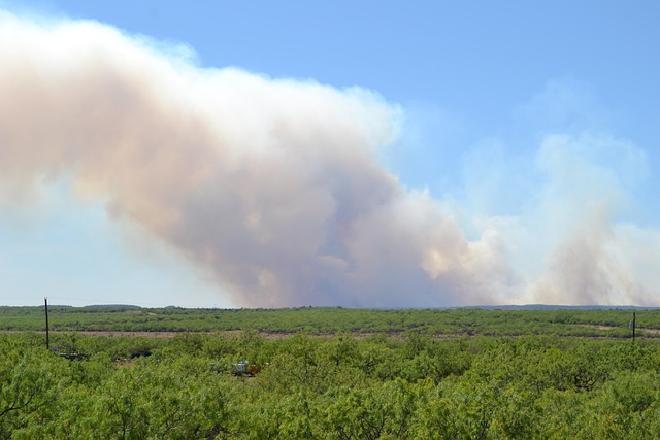

The authors of this study report that wildfires in the western United States are worsening air quality in the West but, paradoxically, may be improving it in the East.
While this conventional wisdom has long informed air quality and fire management policies nationwide, the intense heat released by fires, which is capable of altering air temperatures, destabilizing the atmosphere, and driving strong convection, isn’t fully understood. Because wildfire heat can alter large-scale atmospheric circulation, its role in shaping distant air quality has been underappreciated. Most climate models consider only smoke emissions and not fire heat, which may explain why they tend to overestimate wildfire-driven pollution in the East.
Using both observational data and climate model simulations that incorporate daily heat measurements, Qihan Ma and colleagues found that, during extreme wildfires in the West, PM2.5 actually declines in the East, not only during extreme events but also throughout the fire season. This occurs because the intense heat released by large fires drives strong convection, which changes weather patterns, suppresses eastward smoke transport, and promotes rainfall that helps cleanse the air.
“The differential impacts of wildfires necessitate the more appropriate allocation of resources and policy intensity for fire management and regional pollution control,” wrote the authors. “With greening in a warming world, the accumulation of fuels will lead to increased fire heat release when wildfires occur. It is imperative to consider fire heat in the Earth system when conducting comprehensive climate simulations and wildfire risk assessments.” In a related Perspective, Yun Qian discusses the study and the implications of its findings in greater detail.
Citation #
- The paper Fire heat affects the impacts of wildfires on air pollution in the United States was published in Science journal. Authors: Qihan Ma, Linyi Wei, Yong Wang, Guang J. Zhang, Xinlin Zhou & Bin Wang
Acknowledgments #
We thank the working groups and authors involved in the GFED fire dataset retrieval and public availability. We thank the National Aeronautics and Space Administration (NASA), the National Oceanic and Atmospheric Administration (NOAA), and the US Environmental Protection Agency (EPA) for making the reanalysis and observation data available. We also thank the GBD and the ILOSTAT organizations for providing detailed datasets on health and labor and making them publicly available. We would like to express our heartfelt thanks to Y. Han at the Scripps Institution of Oceanography for incorporating fire heat into the SP-CESM; H. Yin at the University of British Columbia; L. Lian at Lanzhou University for their suggestions on assessing the impacts of fires on health and the economy; and Z. Li at the University of Maryland for his helpful discussions. This research initiative originated at Tsinghua University and we would like to formally acknowledge the critical support extended through Tsinghua’s research platform.
Funding #
This work was funded by the following: National Key Research and Development Program of China grant 2022YFF0802002, National Natural Science Foundation of China grant 41975126, and Office of Biological and Environmental Research of the US Department of Energy Atmospheric System Research Program Interagency Agreement grant DE-SC0022064.
- The article Analyzing impact of heat from western wildfires on air pollution in the eastern US summarized and signed by Walter Beckwith was published in the American’ Association for the Advancement of Science website
Contact [Notaspampeanas](mailto: notaspampeanas@gmail.com)

